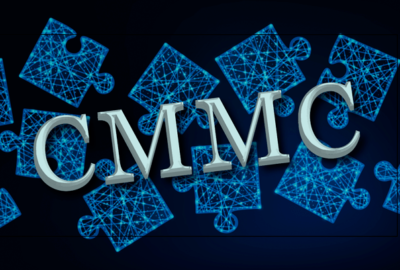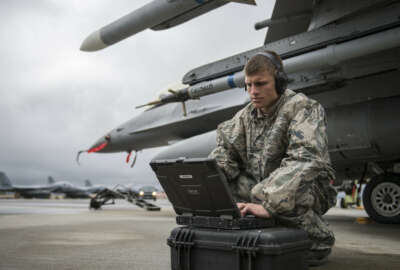
Faster prototyping means faster development
The National Armaments Consortium has a new way of working with the Defense Ordnance Technology Consortium, a group sponsored by the Secretary of Defense aimed at...
Best listening experience is on Chrome, Firefox or Safari. Subscribe to Federal Drive’s daily audio interviews on Apple Podcasts or PodcastOne.
These days for the Defense Department, it’s all about speedy development of new capabilities. That usually starts with prototypes. Now an industry group, the National Armaments Consortium, has a new way of working with the Defense Ordnance Technology Consortium, a group sponsored by the Secretary of Defense. All aimed at better and faster prototyping. With more, the consortium’s executive director Charlie Zisette joined Federal Drive with Tom Temin.
Interview transcript:
Tom Temin: Mr. Zisette, good to have you on.
Charlie Zisette: Oh, it’s good to be on. Thank you for taking the time.
Tom Temin: Now we’ve got two consortiums here, the National Armaments Consortium, that’s the industry group that you lead, and then there’s the DOTC, the Defense Ordinance Technology Consortium, how do they relate and what are you all doing out there?
Charlie Zisette: Oh, great question. So the National Armaments Consortium is essentially an association of over 900 companies and universities across the country representing both traditional and non traditional developers. We are in an other transaction agreement with the Department of Defense, as you said with OSD, and in that other transaction agreement, we are basically working to collaborate and innovate to develop armament solutions rapidly for the Department of Defense and for the warfighter.
Tom Temin: And when you mentioned other transactions so that the money flow is under the OTA authority as opposed to the FAR acquisitions.
Charlie Zisette: Absolutely right. And it’s through that other transaction authority that really has become the cornerstone for rapid prototyping because it does something that FAR doesn’t do. It really allows us to collaborate to work together during that requirements generation phase, during the proposal phase, so that we’re going to get the best solutions right out of the box.
Tom Temin: Your consortium, National Armaments, recently said there’s a new way of working with the government. So that is the establishment of Ordinance Technology Consortium, or is there something new built on the pre existing arrangement?
Charlie Zisette: It was really built on a pre existing arrangement. We’ve actually been using this OTA approach for 20 years. But we’ve grown to where we have now over 650 active projects. And we’re doing about roughly around $2 billion in prototyping projects per year. And that battle rhythm and that throughput demanded that we had to, quite frankly, innovate the process itself, so that we can become more agile and more responsive to the needs of the development community. And that’s what we did. We sat down with the Army contracting command, with Department of Defense developers, and the consortium then established a new process that really leans this all out so that development projects can happen much more quickly and much more rapidly.
Tom Temin: Couple of questions then — this is only the Army involved this time around or not the Navy and the Air Force yet?
Charlie Zisette: Ph no. We definitely do armaments for all of the DoD. So our customer complexes, Navy, Air Force, Army, Marine Corps, and some of the agencies as well like the Strategic Capabilities Office. So everybody has access to using this program. One of the really great attributes is it allows us to collaborate across services. So where we have common requirements or common threats that we’re trying to address, we can work those together, and it makes it that much more efficient.
Tom Temin: And looking back over the years have there been any prototypes that have come into production that has become standard capabilities or weapons that the Armed Forces use?
Charlie Zisette: Absolutely. A broad range from small caliber ammunition to large caliber guided weapons systems that we now employ GPS on the front end of our projectiles. So we’ve completely changed the lethality and accuracy of the munition. We’re also now embracing hypersonics. And looking at the next generation of glide bodies and material science to develop higher temperature and stronger materials so that they can withstand the high g-loads and the environment of hyper velocity type ranges.
Tom Temin: So it sounds like prototyping happens at the exotic level, like you mentioned the hypersonics, but also at even the prosaic things like what shoots out of the front end of a pistol.
Charlie Zisette: Exactly. I remember wasn’t too long ago, we were trying to figure out how can we get a bullet to turn a corner? Obviously, the physics don’t allow that. But instead, what we were able to do is learn how to put a fuse on the front end of a medium caliber round and have a precision timing so that when it made it to the corner, it would detonate and be able to take the target out around the corner. So we’re adapting our current systems to be able to address much more challenging target sets and much more challenging threats.
Tom Temin: Got it, sounds like something Elmer Fudd probably wishes he had, but you can’t show those on cartoons anymore. And what are the outlines of what the Defense Ordnance Technology Consortium develops? Because ordnance implies not the platforms that deliver the weapon, but that would shoot or explodes.
Charlie Zisette: Well, you’re right, sometimes like to use the term zoom-n-boom, but with armaments today, it’s much more complex than that. It’s essentially think of it as everything in the kill chain. So whether we’re trying to do protection and survivability of our platforms because we’ve got to counter unmanned aerial systems, or we are trying to improve the lethality or the accuracy of our weapon systems. And these weapon systems can be ship-based, they can be sea, under-sea, space. And so you almost have to open up your aperture to think about the broad spectrum of armaments today, particularly even in terms of sensors and sensor systems. How do we detect the target and locate it? How do we find it in flight? All of those things come into what I call the system of systems of armaments.
Tom Temin: With systems and zoom-n-boom types of items that come under prototyping with other transaction authority dollars, when the military decides that this is something we’re going to go with in volume — can the OTA developer participate in the volume production of them under regular acquisitions?
Charlie Zisette: That’s a really good question. So fortunately, in the NDAA of 17, Congress has allowed the prototype to mature and actually transition into production. That was key because over 50% of our projects that we’re conducting are being led by non traditional. Non traditional contractors who haven’t historically played in the Department of Defense. And so giving them an opportunity to not only be in the technology development, but actually produce and become part of our industrial base is critical. And so we’re now starting to see as a result of that statute change, an opportunity for our non-traditionals in the industrial base to mature and start to produce in support of the Department of Defense.
Tom Temin: And when you look at the family of non traditional, is it mostly small companies or are there other large companies that just haven’t been in the defense sector before?
Charlie Zisette: It’s absolutely both, we will see small, innovative, maybe modeling and simulation companies, or some of the small startups that are doing advanced circuit boards. But you’re also seeing some of the large companies that historically have just never played in the defense sector. And the reason why is to be very frank, it was just too cumbersome, too difficult to learn how to matriculate into a FAR based acquisition. And with this OTA. it has made it much more accessible. In addition, we actually provide a lot of training and mentoring to the non-traditionals so that they can understand how to do business with the federal government and with the Department of Defense.
Tom Temin: So who knows someday we could see a Tesla tank.
Charlie Zisette: Yeah. Wouldn’t that be exciting? To your point, energy storage and energy management is one of our biggest challenges in the armaments sector. Everything is taking more and more power. And yet we want to be lighter and faster. And so you’re exactly right — someday we may have a Tesla tank.
Tom Temin: Charlie Zisette is executive director of the National Armaments Consortium. Thanks so much for joining me.
Charlie Zisette: Well, thank you. It was my pleasure.
Copyright © 2025 Federal News Network. All rights reserved. This website is not intended for users located within the European Economic Area.
Tom Temin is host of the Federal Drive and has been providing insight on federal technology and management issues for more than 30 years.
Follow @tteminWFED





